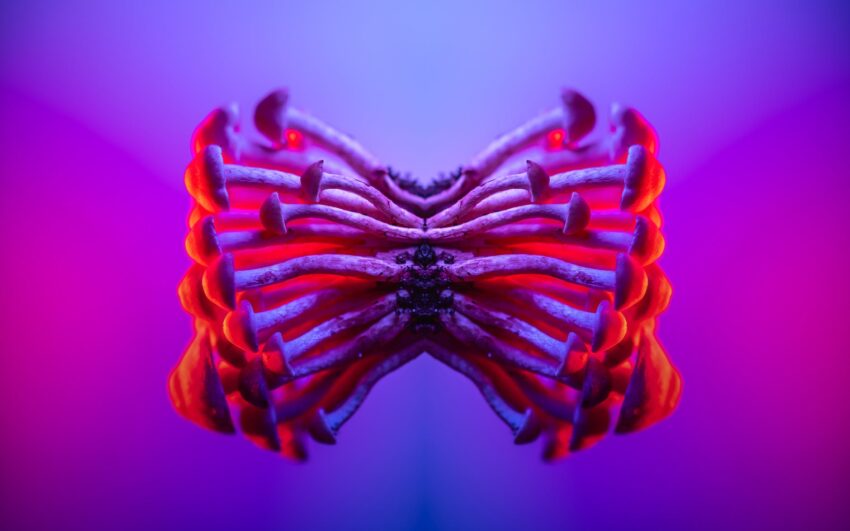Psychedelics, also known as hallucinogens, have been used for spiritual and recreational purposes for centuries. These substances stimulate perception, thought, and mood, often leading to experiences that are beyond ordinary human understanding. This article sheds light on eight distinctive types of psychedelics: LSD, Psilocybin, Ayahuasca, DMT, Mescaline, Ketamine, MDMA, Peyote, and Salvia divinorum.
Lysergic Acid Diethylamide (LSD), discovered in the 1930s, is one of the most powerful hallucinogens. It is derived from ergot, a parasitic fungus that grows on rye. LSD typically causes visual hallucinations and changes in mood and perception, lasting up to twelve hours.
Psilocybin, the psychoactive compound found predominantly in certain species of mushrooms, is another well-known psychedelic. Known colloquially as “magic mushrooms,” they can induce experiences characterized by complex, transformative visions, and profound emotional insights (Source).
Ayahuasca is a traditional spiritual medicine utilized by indigenous peoples of the Amazon basin. It is a brew primarily made from the Banisteriopsis caapi vine and the Psychotria viridis leaf. The leaf contains DMT (Dimethyltryptamine), a potent psychedelic that produces highly hallucinogenic experiences. Ayahuasca users often report profound psychological and spiritual healing, including the release of past traumas (Source).
DMT exists as a standalone psychedelic as well. It is naturally produced in many plant species, and possibly even in the human brain. Often used in the form of ayahuasca, freebase DMT is typically smoked, with effects lasting roughly 30 minutes.
Mescaline, another naturally occurring psychedelic, is found in several species of cacti, including Peyote, San Pedro, and the Peruvian torch. Indigenous cultures in the Americas have used Mescaline for religious rituals. The Mescaline trip is often compared to LSD and psilocybin but is said to be gentler, with a distinct spiritual quality.
Ketamine is a dissociative anesthetic used medically for human and veterinary purposes. Recreationally, Ketamine is taken for its hallucinogenic and dissociative properties. It induces a trance-like state while providing pain relief, sedation, and memory loss.
One cannot discuss the different types of psychedelics without mentioning MDMA, a synthetic drug altering mood and perception. While not traditionally classified as a psychedelic, MDMA, colloquially known as ecstasy or molly, produces heightened energy, pleasure, emotional warmth, and distorted sensory and time perception, making it function partially like one.
Peyote, renowned for its psychoactive properties, is a small, spineless cactus. It contains Mescaline and has been used by Native American cultures in spiritual and healing rituals for thousands of years.
Lastly, Salvia divinorum, or “sage of the diviners,” is a plant native to forests in Mexico. Used by the Mazatec Indians for its ritual divination and healing, the plant’s primary active compound, Salvinorin A, produces intense hallucinations, often of a completely different nature than other psychedelics (Source).
Given the resurgence of interest in these substances, research is being conducted into their possible therapeutic applications, including for mental disorders like depression, anxiety, and PTSD. While certainly not without risk, the realm of psychedelics offers potential avenues for novel treatments and a deeper understanding of human consciousness.
These different types of psychedelics provide a wide range of experiences and potential therapeutic benefits. However, like any drug, they come with risks and potential for misuse. Responsibly exploring these substances requires careful consideration and respect for their power and potential side effects.
